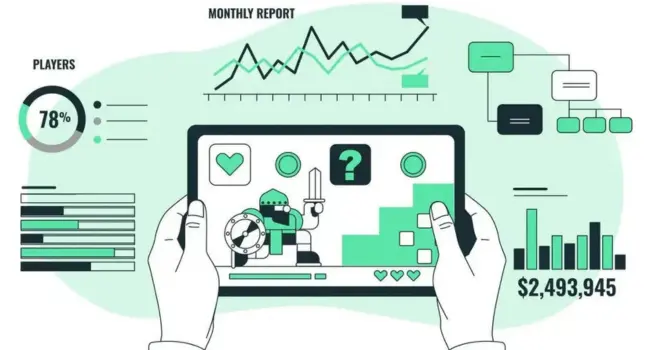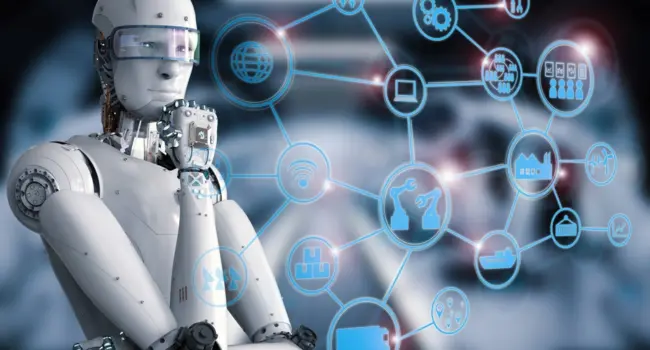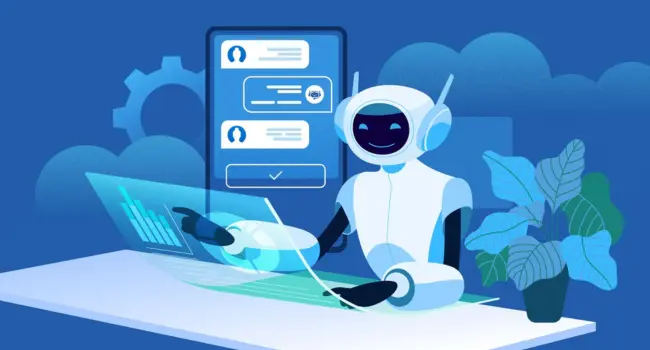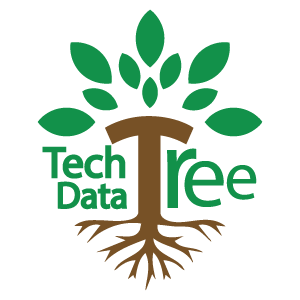Think a world in which cars drive themselves, doctors receive help from smart tools, and machines make quick choices without waiting for people. This is what we mean by autonomy in decision-making. It occurs when machines or systems can make rulings on their own using rules, facts, and experience—just as humans do, but faster and more correctly.
This concept is not simply science fiction. It’s already woven into many things around us. Self-driving technology are rapidly expanding, ranging from smart delivery robots to hospital help systems. These AI-powered robots are designed to act freely based on the situation. They follow specific stages called as autonomous decision processes, which help to improve life, work, and safety.
Many of these AI systems, known as robots or software agents, work behind the scenes in sectors, travel, and even shopping apps. Businesses may now rely on AI-powered systems that act smarter on a daily basis thanks to AI modeling of behavior and choices agents.
Why Autonomous Decision-Making Matters
What’s the point of loving? Because making decisions on their own saves people time, money, and effort. It makes life simpler and the business more efficient.
When businesses adopt AI-powered business models, they often realize major advantages. These systems aid in global decision-making, which means they can manage a large number of jobs without need more workers. Take AI change in manufacturing or AI adoption in rail systems—both result in major cost savings and efficiency gains.
Data-based choices enable firms to avoid mistakes. Machines do not grow tired or bored. That is why AI in business planning grows so popular. It aids in business efficiency and enables firms to work more quickly thanks to actionable AI.
According to McKinsey analysts, firms that use AI-augmented work can increase productivity by up to 40%. Data-driven organizations that embrace this technology consistently outperform their competitors by making faster, more informed strategic decisions. It is an important part of the AI revolution, helping with attaining objectives and providing a unique competitive benefit.
Real-World Applications of Autonomous Decision-Making

Let’s look at how autonomous decision-making is applied in real life.
Healthcare
In hospitals, AI in healthcare helps doctors in making better choices. For example, AI for doctors may scan medical photos and detect early signs of cancer via image analysis. Applied machine learning algorithms power these medical tools to detect problems faster and with greater accuracy than traditional methods.
Healthcare robots help decrease readmitted patients at the Mayo Clinic. AI-powered danger detection helps to ensure the safety of patients. These tools also promote specific healthcare, which provides treatment tailored to each individual.
With hospital AI solutions, doctors may devote more time to patient care while smart tools seamlessly manage electronic health records (EHR) and generate automated alerts. It improves healthcare efficiency for everyone.
Finance
AI in finance has an important effect in banks. It aids in the rapid detection of scams and financial crime. Top firms employ AI-powered trading to purchase and sell stocks in seconds.
Financial decision automation aids in making choices for loan users. Tools such as credit risk assessment check your financial history to figure out whether it is safe to lend. Real-time data analysis also helps banks spot market errors, allowing them to act quickly.
Simple apps can provide specific financial advice using AI-powered ideas. Core banking automation is being used by large banks to speed up formerly tedious tasks.
Manufacturing
AI is used in factories to create products faster and better. Automated quality control is done by machines to detect mistakes. Robotic AI integration enables robots to work along with humans.
Industrial automation enables firms to build more with less error. AI-enhanced tech is used by smart machines to avoid errors from happening. AI-powered drones can also help with security checks and delivery.
To make big projects easier to manage, factories deploy optimize production and flexible AI systems.
Transportation
One of the most common instances is self-driving cars. These self-driving cars employ real-time navigation AI to decide where they must go and how quickly.
In some cities, buses, trucks, and taxis have begun to utilize self-driving technology. Autonomous haulage tools benefit mining trucks, while autonomous fleet use has started in shipping.
These machines use navigation AI systems to make quick choices, aided by 5G vehicle-to-everything (V2X) networks and a high-re maps.
Logistics and Supply Chain
When you receive a package on time, thank logistics AI. Many businesses are increasingly using AI-powered logistics to plan delivery and refill stock.
Optimizing stock makes it easier to know what to order. Delivery planning and AI-powered drones speed delivery to your door.
Unmanned drones scan warehouses, and package sorting and fleet planning are carried out without the help of people. Even future demand planning makes use of AI-powered analytics to predict what clients would want next.
Customer Experience
Have you ever interacted with a support bot? That is part of AI in customer experience. Customer service automation through AI chatbots responds to questions instantly, while AI-powered advice tools suggest what to buy next.
Personal AI assistants, adaptable customer workflows, and targeted promos are all a few ways to improve the customer experience. All of them are powered by AI behavior modeling and add to large-scale modification.
Big brands are turning to lead generating bots and next-best-action AI to keep you engaged and satisfied.
Cybersecurity
To ensure online safety, smart tools are needed. AI in cybersecurity aids in early identification of hackers. AI-powered threat detection detects unusual activity quickly.
Anomaly alerts and real-time threat analysis may help avoid danger from growing. These tools operate 24 hours a day, seven days a week within an artificial intelligence (SOC). Advanced identity authentication systems powered by AI can verify users in milliseconds while detecting sophisticated impersonation attempts that would fool traditional security measures.
Houses and borders are subject to robotic spying. People tend to be wary of black box AI, which shows the need of AI clarity and secure autonomous machines. Protecting data privacy is a main objective for safety tools that automate.
The Challenges of Autonomous Decision-Making

Autonomous systems are useful, but not flawless. There are problems to be solved.
Ethics and Fairness
People want to know if ethical AI development is feasible. For instance, in hospitals, moral issues in healthcare AI are very important.
Many groups are working on AI fairness and ethical norms for AI. They aim to ensure that all people are treated equally. Some people worry about the moral costs of autonomous arms if they are misused.
Groups such as the EU and IEEE advocate for AI governance frameworks to help guide ethical AI use. To ensure fairness and safety, we require ethical impact assessments.
Bias and Transparency
AI systems can sometimes be biased. This occurs when they learn from biased data. That is why we need bias mitigation and inclusive AI design.
Explainable AI makes judgments easier to grasp. It avoids black box AI, which means no one understands how the answer came. AI audits and accountability can help to address this issue.
Keeping data clean through data quality checks and rule-based systems also contributes to confidence.
Safety and Accountability
What happens if an autonomous vehicle collides? Who is to blame? This is where legal accountability in AVs comes in.
Safety in AI is critical. We require strong regulatory frameworks, oversight, and supervision. Tools such as human-in-the-loop (HITL) keep humans involved. Public safety risks are significant. That is why we discuss preemptive safety, particularly with tools such as lethal autonomous weapons (LAWs). Setting guidelines at an early age is essential for staying safe.
Step-by-Step Guide to Using Autonomous AI in Business

Want to use AI tools and platforms for your business? This simple guide shows how enterprise AI adoption and strategic AI implementation can boost growth with smart, easy steps.
How to Start
It may appear hard for a business owner to use autonomous tools, but it is not.
Begin with free AI tools or AI creation platforms that offer drag-and-drop interfaces. They do not need to be coded. Use AI software to test minor tasks.
Use a slow AI adoption plan. Slowly raise your usage. Due to the Deloitte study on AI, strategic use of AI offers long-term benefits. Assess the cost of carrying it out and develop an effective deploy strategy.
It’s also part of digital change and business process redesign, which are present plans to expand your firm.
What Makes AI Work Well
To work well, tools must learn over time. Real-time and continual flexibility are crucial. These are systems of adaptation that alter as they progress.
They make context-aware decisions via analysis of sensor data. They become smarter as they mimic their internal states. Tools employ experience-based learning to improve. They also pick suitable steps using systems for decision-support and focused autonomy.
Conclusion: The Bright Future of Autonomous Decision-Making
The future of autonomous decision-making is bright. Next-generation AI and autonomous technology will make life even more connected.
This is more than just a technical improving; it is a real-world AI change. Businesses are using AI to scale and change their competitive strategies. Even small ones employ robotics to expand.
According to reports, the AI workforce may grow to 97 million by 2025. That is big. More use cases of these smart tools will emerge as AI innovations and general smarts improve.
Frequently Asked Questions (FAQs)

What is autonomous decision-making in simple words?
It refers to machines or tools that make decisions without the need for human intervention. It’s similar to smart thinking, but performed by a machine.
Where do we see autonomous decision-making in real life?
It can be found in self-driving cars, delivery drones, shopping apps, hospitals, and intelligent autonomous robots in fields.
Is autonomous decision-making safe?
Yes, if it is correctly built and tested. Safety is a major issue. It has norms, duty, and AI ethics to help prevent errors.
Can kids learn about autonomous decision-making?
Yes! Kids can try out with easy-to-use tools, play using their own AI assistants, and even create projects using content generated by AI to show learning via experiences.
Will autonomous decision-making take away human jobs?
Some jobs may change, but others grow. With AI-augmented work, humans and machines can work together. The AI workforce is expected to grow a lot.
How can a small business use autonomous decision-making?
They can use powered by AI company models, real-time analytics tools, and platforms to improve customer experience—all at less money.




